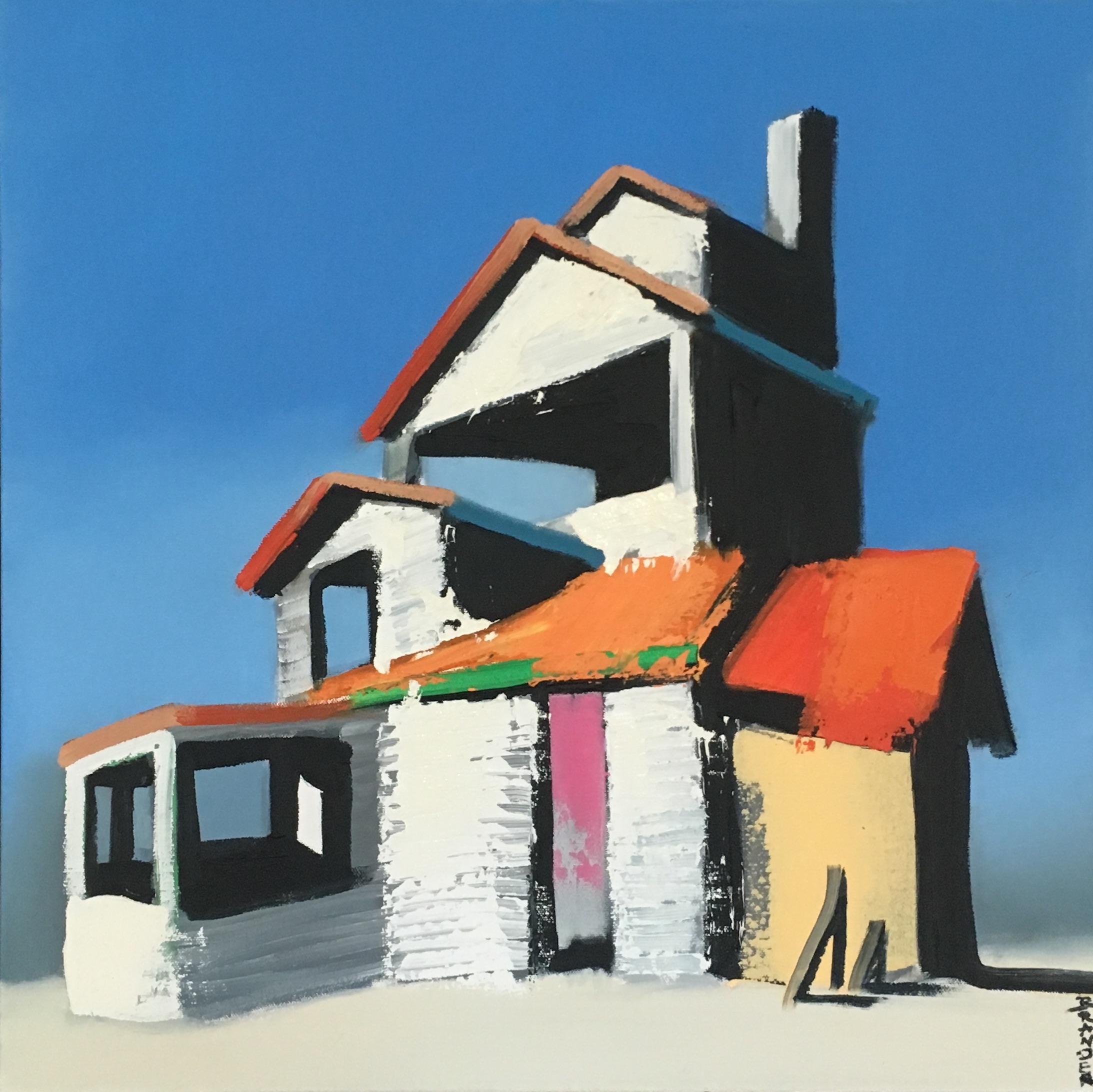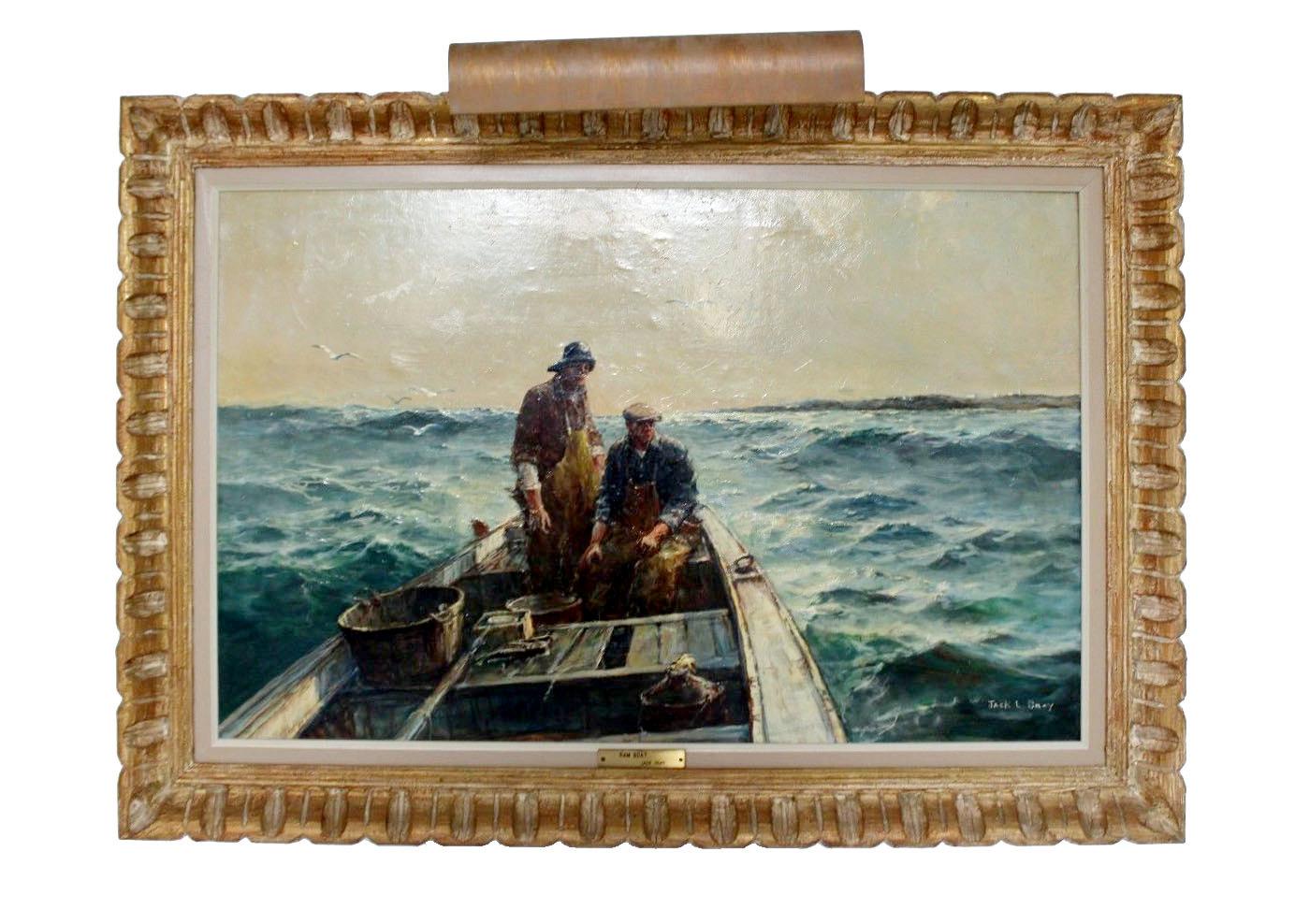Items Similar to Civil War Battle Showing Union Troops in Battle
Want more images or videos?
Request additional images or videos from the seller
1 of 8
Civil War Battle Showing Union Troops in Battle
About the Item
Born in Leverett, Massachusetts, Erastus Field kept his home most of his life in that state but did study briefly with Samuel F.B. Morse in New York City where he lived from 1842 to 1848. He was a folk portrait artist with little modeling skill, but is remembered for the social idealism exhibited by his subjects.
Unlike many of his peers who painted faces on pre-painted bodies, he did the faces first and the clothing addressed social position. He also did historical subjects, one of them being an American Centennial commemoration for Springfield, Massachusetts. He was also known for his scenes from classical mythology and Biblical history.
His wife was artist, Phebe Gilmore, who exhibited as Mrs. P. G. Field at the American Institute in New York City. The Fields lived first in Hartford, Connecticut, then in Monson and Palmer, Massachusetts from around 1832 to 1842. From 1842 to 1848 they lived in New York City.
While in New York City he began to ork with more difficult subject matter, producing The Embarkation of Ulysses" (c. 1844). In New York City he also became associated with the daguerreotypist Abram Bogardus, and on his return to Massachusetts in 1848 began advertising himself as a daguerreotypist. Using these skills, he based his portraits on photographs, and he also made hand-colored photographic portraits. After 1848, most of his paintings were biblical or historical subjects, sometimes adapted or copies from prints.
Returning in 1848 to Massachusetts, he and his wife lived for a time in Leverett and then Palmer before finally settling in Sunderland in 1859, the year of Mrs. Field's death. Field continued to paint until after 1876, during which time he completed his most ambitious and well-known work, the grand Historical Monument to the American Republic (9' x 13') painted for the American centennial. The artist lived on in Sunderland until his death in 1900 at the age of 95. Credit askart
- Attributed to:Erastus Salisbury Field (1805 - 1900)
- Dimensions:Height: 26 in (66.04 cm)Width: 32 in (81.28 cm)Depth: 3 in (7.62 cm)
- Medium:
- Period:
- Condition:
- Gallery Location:Saratoga Springs, NY
- Reference Number:1stDibs: LU17028416872
About the Seller
4.2
Vetted Seller
These experienced sellers undergo a comprehensive evaluation by our team of in-house experts.
Established in 1992
1stDibs seller since 2015
30 sales on 1stDibs
Typical response time: 19 hours
- ShippingRetrieving quote...Ships From: Saratoga Springs, NY
- Return PolicyA return for this item may be initiated within 3 days of delivery.
More From This SellerView All
- TransportBy Julian NemethyLocated in Saratoga Springs, NYSigned lower left. Contemporary artist Julian Nemethy is the son of artist Albert Nemethy, and his work can be distinguished from that of his father by the use of fantastical elements, extreme use of color and detail, and whimsical touches. Julian Nemethy is one of the many artists in the Nemethy family. Born in Hungary, his parents fled the Communist regime in the mid-1950s when Julian was a small child. He was one of six siblings who were raised by their father. In high school, Julian taught himself to paint, and felt he had found his vocation. In the 1980s, he moved to the Smokey Mountains of...Category
1980s Outsider Art Landscape Paintings
MaterialsCanvas, Oil
- River LandscapeBy John DolphLocated in Saratoga Springs, NYJohn Henry Dolph, is best known as painter of domestic animals, especially cats. He was born in 1835 in Fort Ann, New York, and spent much of his career th...Category
19th Century Hudson River School Landscape Paintings
MaterialsCanvas, Oil
- Blackberry picking near Church's Farm Hudson NYBy Arthur PartonLocated in Saratoga Springs, NYSigned lower left and dated 1863. Known as a Hudson River School painter, especially of mountain landscapes, Arthur Parton was well established in the New York art world where he exhibited at the National Academy of Design for more than half a century. He was born in Hudson, New York to a religious family supported by a cabinetmaker father. He enrolled in the Pennsylvania Academy of Fine Arts as a student of William Trost Richards, who remained a strong influence, and in 1862, his first exhibitions were in Philadelphia. In 1864, he moved to New York City where he exhibited regularly with the National Academy of Design excepting 1869 when he spent a year in Europe and was influenced by the Barbizon style of painting. In 1874, he and his wife moved into the Tenth Street Building in New York City, and he kept his studio there until 1893. In 1876, he gained much national notoriety at the Philadelphia Centennial Exposition for his paintings November, Loch Lomond and Solitude. He spent summers painting in the...Category
1860s Hudson River School Landscape Paintings
MaterialsBoard, Oil
- Sunrise on Lake George New YorkBy Samuel GriggsLocated in Saratoga Springs, NYSigned lower right Known as a painter of the White Mountains of New Hampshire, Samuel Griggs was listed as an architect in the Boston City directory from ...Category
Late 19th Century Hudson River School Landscape Paintings
MaterialsOil
- Indians in a LandscapeBy William Mason BrownLocated in Saratoga Springs, NYSigned lower left. Along with Martin Johnson Heade, William Mason Brown was among a very elite group of artists equally adept at landscape painting as well as still-life painting. H...Category
Late 19th Century Hudson River School Landscape Paintings
MaterialsCanvas, Oil
- California MillBy Hermann Ottomar HerzogLocated in Saratoga Springs, NYSigned & dated, lower left, 1869 Herman Ottomar Herzog was born in Bremen, Germany, on November 15, 1831. He studied art at the Dusseldorf Academy, starting in 1848, under several classical landscape painters. In 1855, Herzog made his first visit to Norway. The trip was a milestone in Herzog's career as it exposed him to the rugged landscape of the Norwegian wilderness and instilled in him a lifelong sense of nature that was to show in all his work. During the late 1850's and early 1860's, Herzog's fame spread throughout Europe. His paintings were collected for their dynamic realism and strong atmospheric effects. Among his patrons were several of Europe's royal families, including Queen Victoria of England and Grand Duke Alexander of Russia. He exhibited in the Paris Salon in 1863 and 1864, winning an Honorable Mention. While in Paris, it is thought that Herzog came into contact with the popular Barbizon School, whose adherents painted the grandeur and beauty of Nature in a romantic and realistic style. The effect of the Barbizon painters can also be seen in Herzog's poetic handling of mood and color. Although he was still in Europe, Herzog sent several paintings for exhibition at the Pennsylvania Academy from 1863 to 1869. He had several friends in the United States and they were developing a rather good demand for his work. It is not known exactly when Herzog decided to come to America. Sometime in the late 1860's he settled in Philadelphia. Besides wanting a developing market for his work, Herzog left Bremen due to rising political agitation by Prussia, which had just absorbed Bremen into its domain. In America, Herzog continued to paint his romantic landscapes, finding the American wilderness well suited to his style. In 1871, he traveled up the Hudson River on a painting tour. In 1873, he took his first trip west, going to Yosemite, then to Wyoming, Oregon, and along the West Coast to the Coronado Island, near the Mexican border. Herzog made several journeys west, finding each trip more fruitful than the last. He became known for his depictions of Yosemite, receiving great acclaim for a fine El Capitan, much in the style of his fellow countryman and painter Albert Bierstadt. His last trip west was in 1905, at the age of 74. In 1876, Herzog participated in the Centennial Exhibition in Philadelphia, showing a Norwegian scene and a Yosemite landscape...Category
1860s Hudson River School Landscape Paintings
MaterialsCanvas, Oil
You May Also Like
- Atlantic Enclosure, Oil on canvas by Contemporary Scottish Artist Garry BranderBy Garry BranderLocated in Battle, East SussexAtlantic Enclosure 58x58cm including Black wooden Frame A graduate of Glasgow School of Art, Brander gained a BA (Hons) in 2011 Early on, Garry discovered an interest in old buil...Category
21st Century and Contemporary Contemporary Landscape Paintings
MaterialsOil
- Mid Century Modern Framed Ram Boat Signed Oil Signed Jack Lorimer Gray 1950s 60sBy Jack L. GrayLocated in Keego Harbor, MIJack Lorimer Gray, 1927-1981, was born in Halifax, Nova Scotia to Scottish parents. His talents as an artist were spotted by E. Wyly Grier while Gray was still a child. He attended t...Category
1950s Landscape Paintings
MaterialsOil
- 'Plaines de la Midjeda Blida'. Oil sketch on cardboard. Signed and titled.By Jules Pierre van BiesbroeckLocated in Paris, FR'Plaines de la Midjeda Blida'. Oil sketch on cardboard. Signed and titled on the back. This work will be recorded in the catalogue raisonné of the work of the artist currently in pre...Category
Mid-20th Century Post-Impressionist Landscape Paintings
MaterialsOil
- A view of Sebastopol in the Crimea.Located in Paris, FRA view of Sebastopol in the Crimea. Oil on canvas. In a 19th century gild wood and plaster frame. This painting can be dated around 1830/1840 given the dresses worn by the women i...Category
1830s Realist Landscape Paintings
MaterialsOil
- Cloudy landscape. Oil sketch on cardboard. Unsigned.By Jules Pierre van BiesbroeckLocated in Paris, FRCloudy landscape. Oil sketch on cardboard. Unsigned. This work will be recorded in the catalogue raisonné of the work of the artist currently in preparation. Jules Van Biesbroeck was the son of Jules Evariste van Biesbroeck, a painter of Ghent, but was born in Italy, in Portici, near Naples, while his parents were staying there. (In the 19th century many artists made educational trips to Italy). It was a long visit: the child was two years old by the time the family returned to Ghent.[1] After a short period of practice with his father, van Biesbroeck was enrolled in the Academy of Fine Arts in Ghent. His first painting, "The Shepherd" (French: Le pâtre), was sold at the Triennale in Ghent. In 1888, when he was only 15 years old, he made his debut at the "Salon des Champs-Elysées" in Paris with his monumental work "The Launch of the Argo" (French: Le lancement...Category
Early 20th Century Impressionist Landscape Paintings
MaterialsOil
- 'Agay, le château et le Sémaphore'. Oil on canvas. Signed.By Armand GuillauminLocated in Paris, FR'Agay, le château et le Sémaphore'. Oil on canvas. +/- 1922 Signed lower right Measurements : 60 x 73 cm. This painting will be recorded in the second volume of the Catalogue Raisonn...Category
1920s Impressionist Landscape Paintings
MaterialsOil

